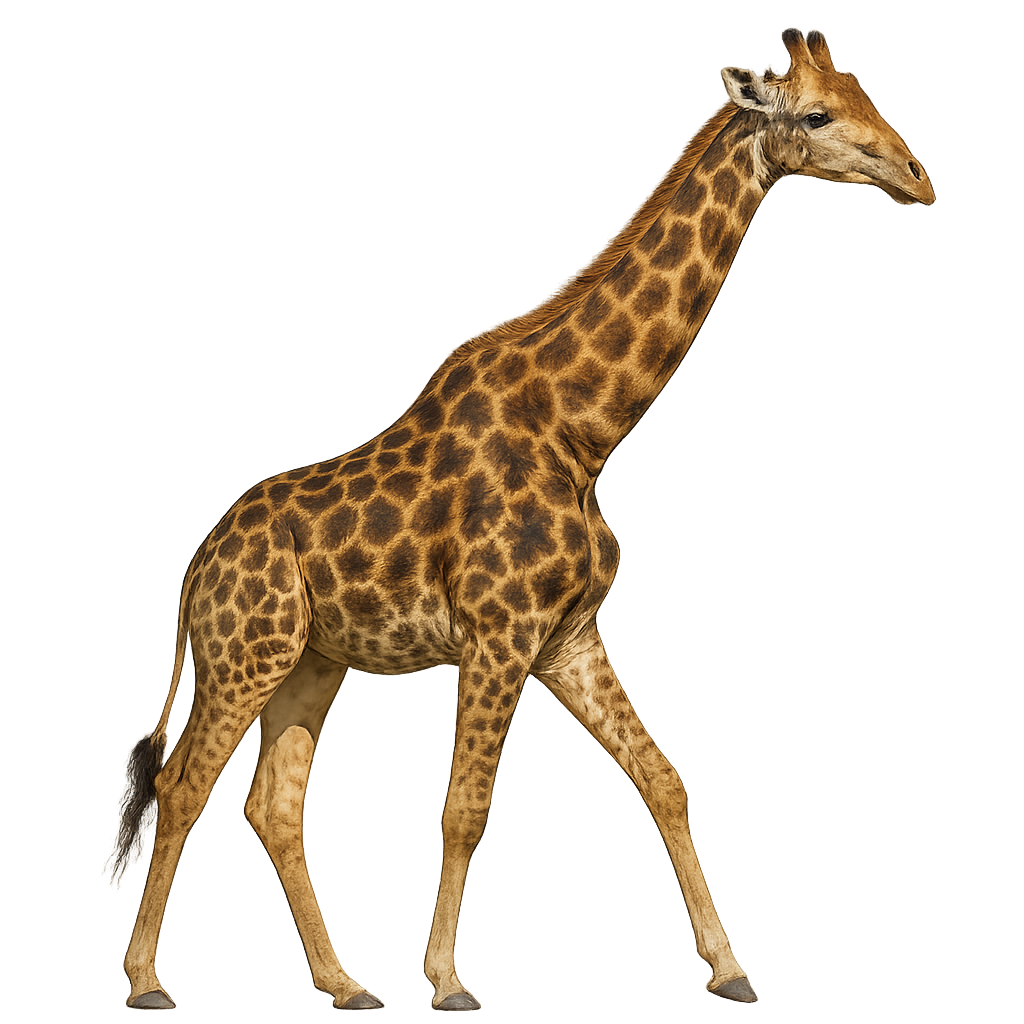Your wildlife photography guide.
Explore the southern giraffe in detail, study its behavior, prepare your shots.
Where to observe and photograph the southern giraffe in the wild
Learn where and when to spot the southern giraffe in the wild, how to identify the species based on distinctive features, and what natural environments it inhabits. The WildlifePhotographer app offers tailored photography tips that reflect the southern giraffe’s behavior, helping you capture better wildlife images. Explore the full species profile for key information including description, habitat, active periods, and approach techniques.
Southern Giraffe
Scientific name: Girafe giraffa

IUCN Status: Vulnerable
Family: GIRAFFIDAE
Group: Mammals
Sensitivity to human approach: Suspicious
Minimum approach distance: 110 m
Rut period: June to August
Gestation: 450-465 jours
Births: August to October
Habitat:
Savanna and grassy areas
Activity period :
Primarily active during the day, with peak activity in the morning and late afternoon.
Identification and description:
The Southern Giraffe is a subspecies of giraffe, characterized by its slender body, long neck, and robust legs. It typically stands between 4.3 and 4.8 meters tall, with males being larger and heavier than females, weighing between 800 and 1,200 kg. Its coat is light brown to beige, with irregular darker patches that are bordered by white. The patches of the Southern Giraffe are larger and more spaced out than those of other subspecies, giving it a distinctive pattern. It primarily inhabits the savannas and woodlands of southern Africa, notably in South Africa, Namibia, Botswana, and Zimbabwe. Herbivorous, it feeds primarily on acacia leaves, berries, and fruits, which it reaches with its long neck and prehensile tongue. While the species is currently less threatened than other giraffe subspecies, the Southern Giraffe faces risks related to habitat loss and population fragmentation.
Recommended lens:
70-200 mm – adjust based on distance, desired framing (portrait or habitat), and approach conditions.
Photography tips:
Approach slowly and quietly, using a telephoto lens to capture images from a distance. Although they’re large and visible, southern giraffes can be sensitive to human approach.
Photograph early in the morning or late in the afternoon, when soft light highlights their movement and silhouette across the savannah.
Watch for natural behaviors—feeding on acacia leaves, walking in herds, or resting in open areas. These moments offer great photo opportunities.
Be patient and respectful—keep your distance to avoid disturbing their natural rhythm.
IUCN status: Vulnerable. Respect their habitat and follow local conservation guidelines.
The WildlifePhotographer App is coming soon!
Be the first to explore the best nature spots, track rutting seasons, log your observations, and observe more wildlife.
Already 1 432 wildlife lovers subscribed worldwide

